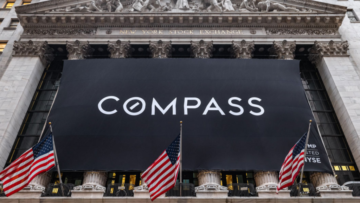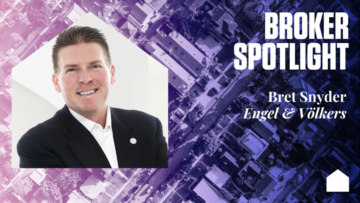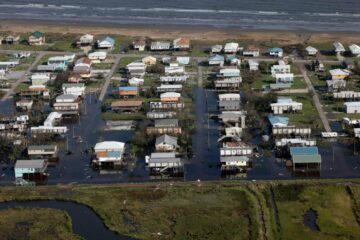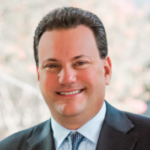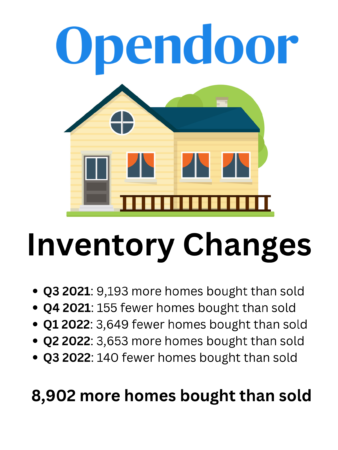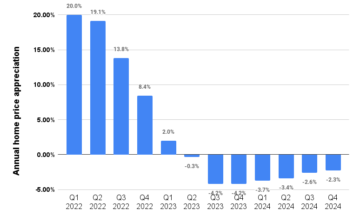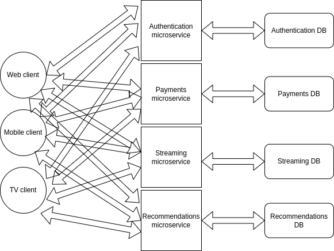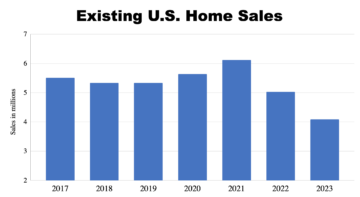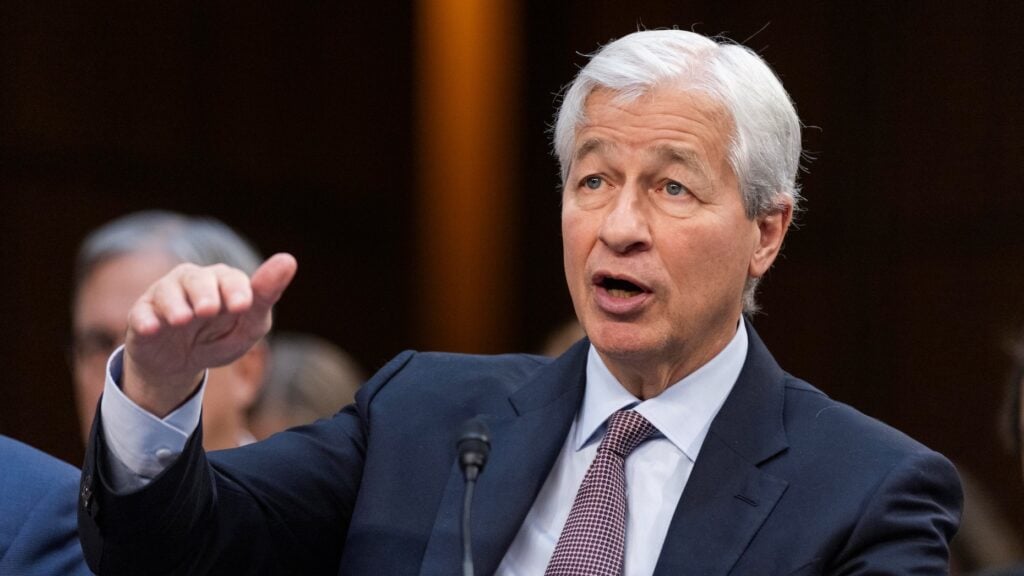
Jamie Dimon thinks interest rates could rise to 8 percent or more. He also said in a new letter that a recession and stagflation could be in the offing.
Join the movement at Inman Connect Las Vegas, July 30 – Aug. 1! Seize the moment to take charge of the next era in real estate. Through immersive experiences, innovative formats and an unparalleled lineup of speakers, this gathering becomes more than a conference — it becomes a collaborative force shaping the future of our industry. Secure your tickets now!
The real estate industry has been hoping for lower mortgage rates for two years now, but on Monday, the high-profile CEO of JPMorgan Chase offered a counter-prediction that no one is going to love: Rates may well be headed up over the long term.
Jamie Dimon, arguably the most famous banking executive in the United States, made his prediction in a shareholder letter Monday. Among other things, Dimon said interest rates could ultimately reach 8 percent, and that both a recession and stagflation are possible.
“We are prepared for a very broad range of interest rates, from 2 percent to 8 percent or even more, with equally wide-ranging economic outcomes — from strong economic growth with moderate inflation (in this case, higher interest rates would result from higher demand for capital) to a recession with inflation; i.e., stagflation,” he wrote in the letter.
Though such comments leave the door open to the possibility of better economic times, Dimon did write that inflation is likely to go up in the long term, not down as the Federal Reserve would like. And he suggested economic models predicting some relief on this front may be missing key global trends.
“Huge fiscal spending, the trillions needed each year for the green economy, the remilitarization of the world and the restructuring of global trade — all are inflationary,” Dimon argued.
Dimon’s comments come against a backdrop of spiking inflation at the tail end of the COVID-19 pandemic. Responding to that inflation, the Fed began aggressively raising interest rates roughly two years ago, and as of Friday, they stood at 5.33 percent — far below the high end of the range Dimon offered in his letter. The Fed doesn’t directly control mortgage rates, but they typically rise as well as the Fed increases the cost of borrowing money.
In other words, if Dimon is correct that a variety of global trends will keep inflation high in the coming years, the cost of getting a loan on a house could rise as well.
Dimon’s comments also fly in the face of the accepted wisdom in certain corners of the real estate industry. Last fall, for instance, multiple economists predicted mortgage rates had peaked. Some also predicted that rates would gradually drop this year and in 2025, though there was some disagreement over how large that drop might be.
Alternatively, some economists have lately revised their predictions to reflect a longer period of higher rates.
Either way though, agents across the U.S. had been hoping rates would fall significantly for spring, which is typically the busiest month for homebuying. Instead, rates have been bobbing up and down this year, sometimes sapping demand for loans.
Dimon’s objective in his letter Monday was to assure shareholders that his company is prepared for whatever events might take place in the future. And he framed higher rates merely as a possibility, not an ensured outcome.
But he did point to “large amounts of government deficit spending” and a host of other facts that could ultimately conspire to keep the cost of borrowing money high.
This may lead,” Dimon wrote, “to stickier inflation and higher rates than markets expect.”
- SEO Powered Content & PR Distribution. Get Amplified Today.
- PlatoData.Network Vertical Generative Ai. Empower Yourself. Access Here.
- PlatoAiStream. Web3 Intelligence. Knowledge Amplified. Access Here.
- PlatoESG. Carbon, CleanTech, Energy, Environment, Solar, Waste Management. Access Here.
- PlatoHealth. Biotech and Clinical Trials Intelligence. Access Here.
- Source: https://www.inman.com/2024/04/08/jpmorgan-chase-ceo-warns-of-higher-rates-more-inflation/
- :has
- :is
- :not
- $UP
- 2%
- 2025
- 30
- 31
- 33
- 5
- 8
- a
- accepted
- across
- against
- agents
- aggressively
- ago
- All
- also
- among
- amounts
- an
- and
- ARE
- arguably
- argued
- AS
- assure
- At
- Aug
- backdrop
- Banking
- BE
- becomes
- been
- began
- below
- Better
- Borrowing
- both
- broad
- busiest
- but
- capital
- case
- ceo
- certain
- charge
- chase
- collaborative
- COM
- come
- coming
- coming years
- comments
- company
- Conference
- Connect
- control
- corners
- correct
- Cost
- could
- COVID-19
- COVID-19 pandemic
- DEFICIT
- Demand
- DID
- Dimon
- directly
- Doesn’t
- Door
- down
- Drop
- e
- each
- Economic
- Economic growth
- economists
- economy
- end
- ensured
- equally
- Era
- estate
- estate industry
- Even
- events
- executive
- expect
- Experiences
- Face
- facts
- Fall
- famous
- far
- Fed
- Federal
- federal reserve
- Fiscal
- For
- Force
- formats
- Friday
- from
- front
- future
- gathering
- getting
- Global
- global trade
- Go
- going
- Government
- gradually
- Green
- Growth
- had
- Have
- he
- headed
- High
- high-profile
- higher
- his
- hoping
- host
- House
- How
- HTTPS
- i
- if
- immersive
- in
- Increases
- industry
- inflation
- Inflationary
- innovative
- instance
- instead
- interest
- Interest Rates
- IT
- Jim
- jpg
- JPMorgan
- jpmorgan chase
- July
- Keep
- Key
- large
- LAS
- Las Vegas
- Last
- lately
- lead
- Leave
- letter
- like
- likely
- lineup
- loan
- Loans
- Long
- longer
- love
- lower
- made
- Markets
- May..
- merely
- might
- missing
- models
- moderate
- moment
- Monday
- money
- Month
- more
- Mortgage
- most
- movement
- needed
- New
- next
- no
- now
- objective
- of
- offered
- Offing
- on
- ONE
- open
- or
- Other
- our
- Outcome
- outcomes
- over
- pandemic
- percent
- period
- Place
- plato
- Plato Data Intelligence
- PlatoData
- Point
- possibility
- possible
- predicted
- predicting
- prediction
- Predictions
- prepared
- raising
- range
- Rates
- reach
- real
- real estate
- recession
- relief
- Reserve
- responding
- restructuring
- result
- Rise
- roughly
- s
- Said
- Seize
- shaping
- shareholder
- Shareholders
- significantly
- some
- speakers
- Spending
- spring
- stagflation
- States
- stood
- strong
- such
- Take
- term
- than
- that
- The
- the Fed
- The Future
- the world
- their
- There.
- they
- things
- Thinks
- this
- this year
- though?
- Through
- tickets
- times
- to
- trade
- Trends
- trillions
- two
- typically
- u.s.
- Ultimately
- United
- United States
- unparalleled
- variety
- VEGAS
- very
- Warns
- was
- Way..
- WELL
- whatever
- which
- will
- wisdom
- with
- words
- world
- would
- write
- wrote
- year
- years
- Your
- zephyrnet


